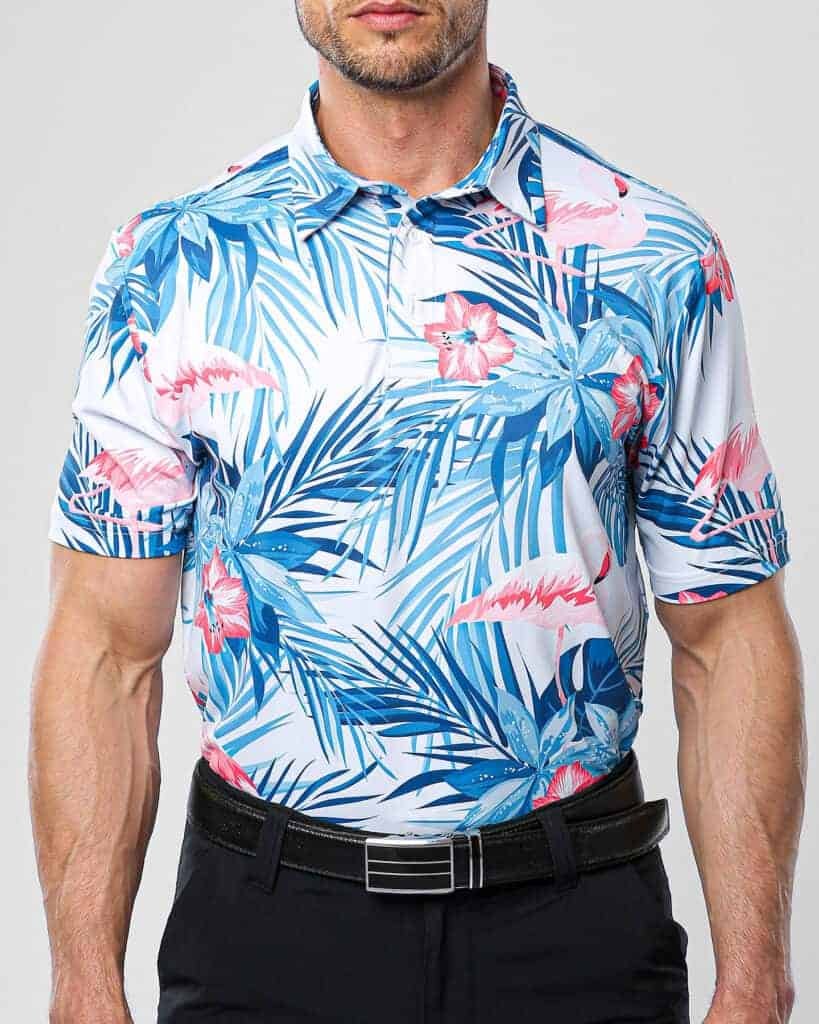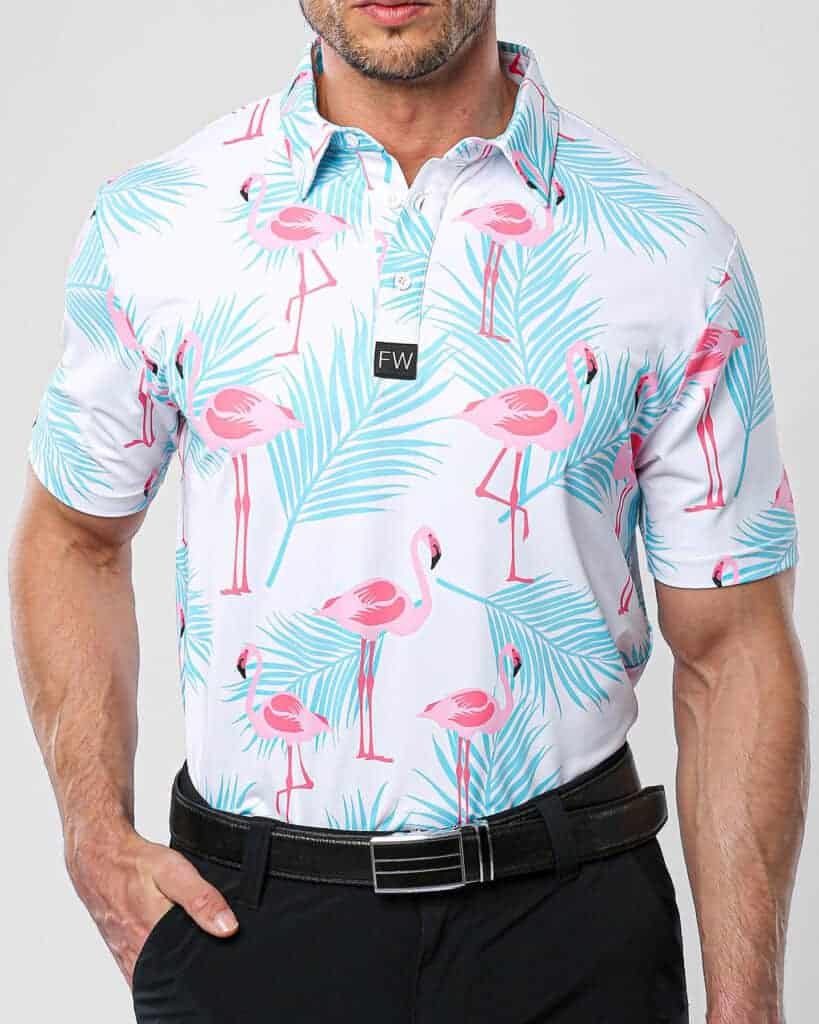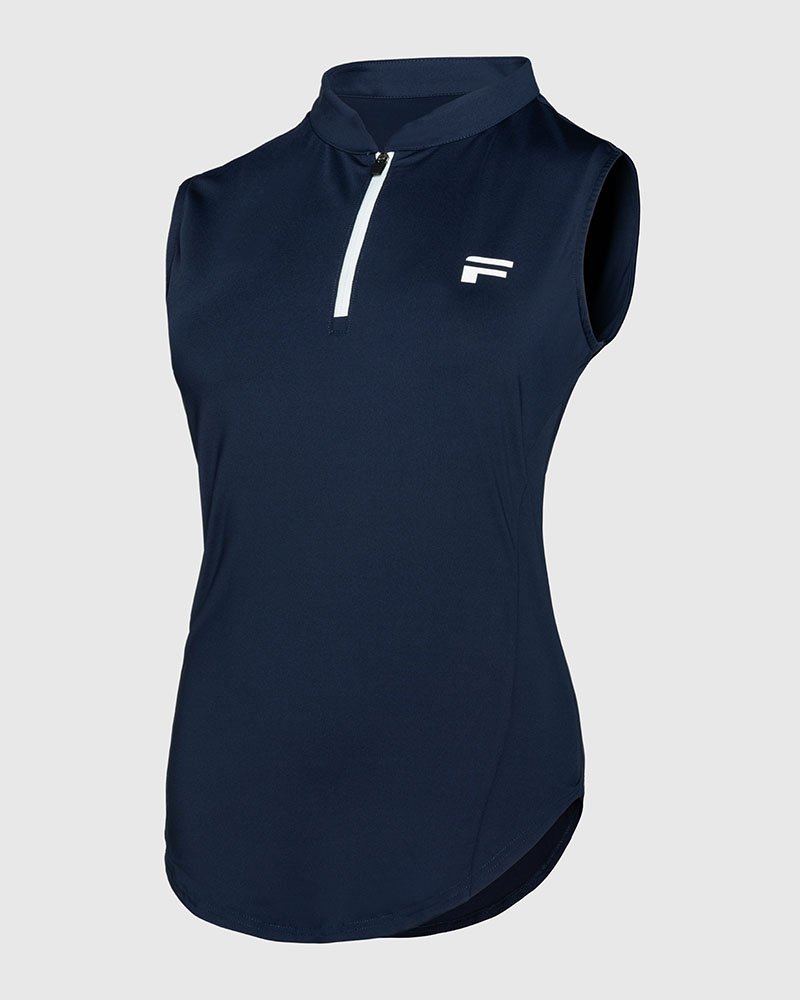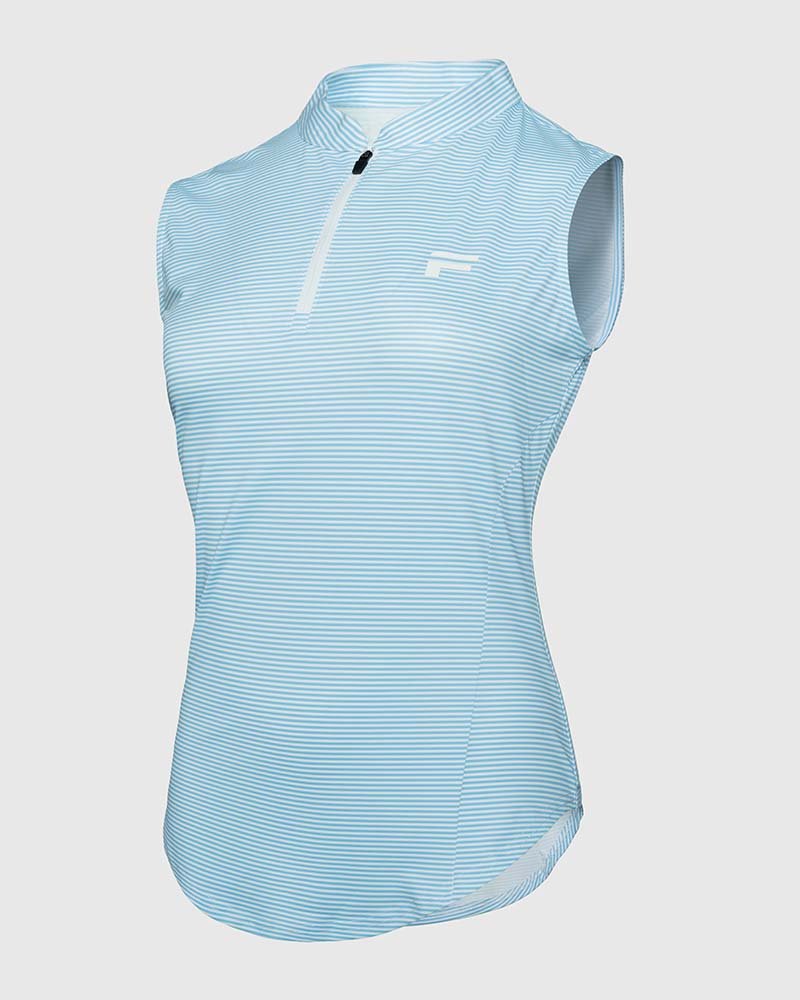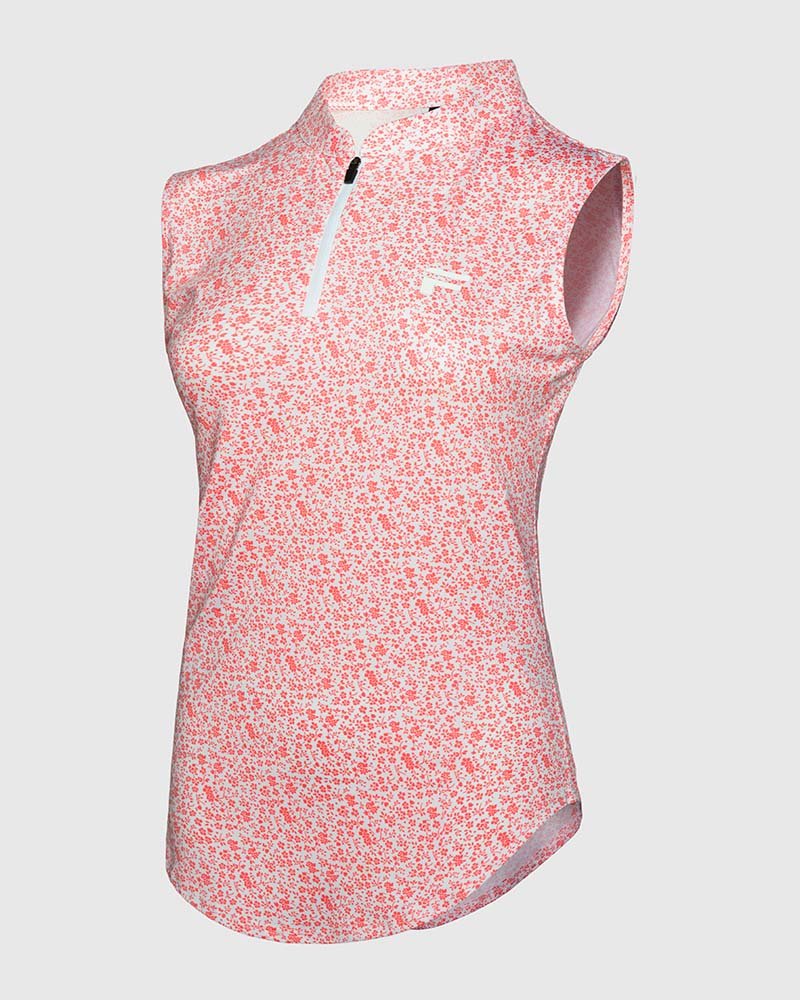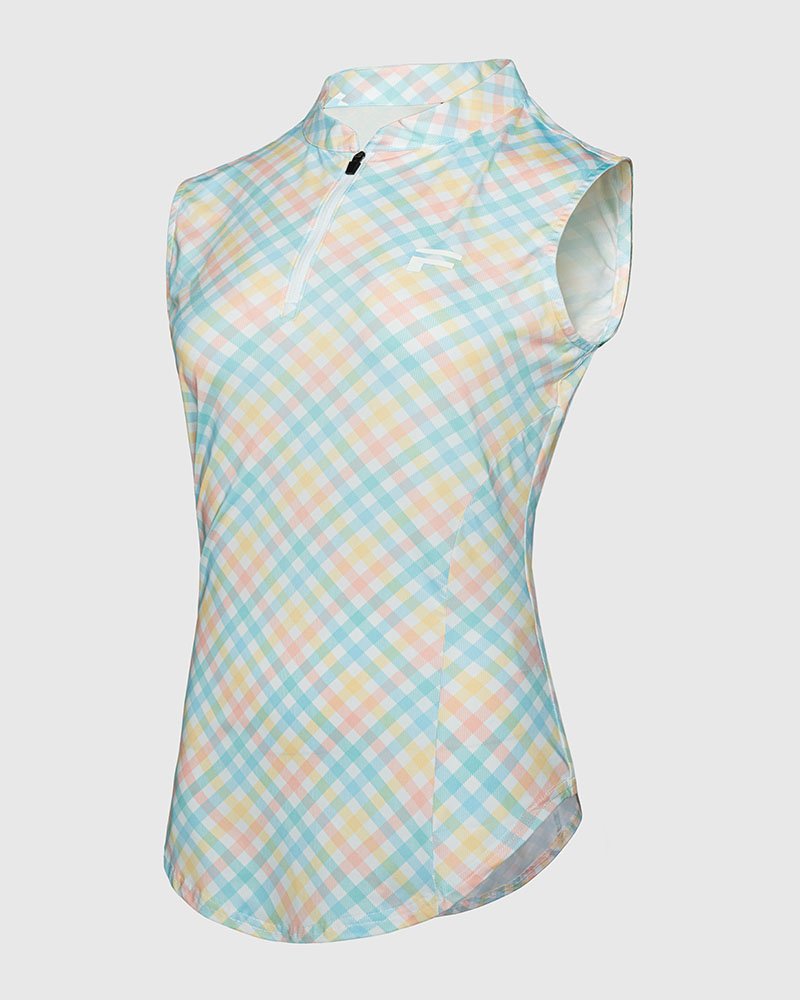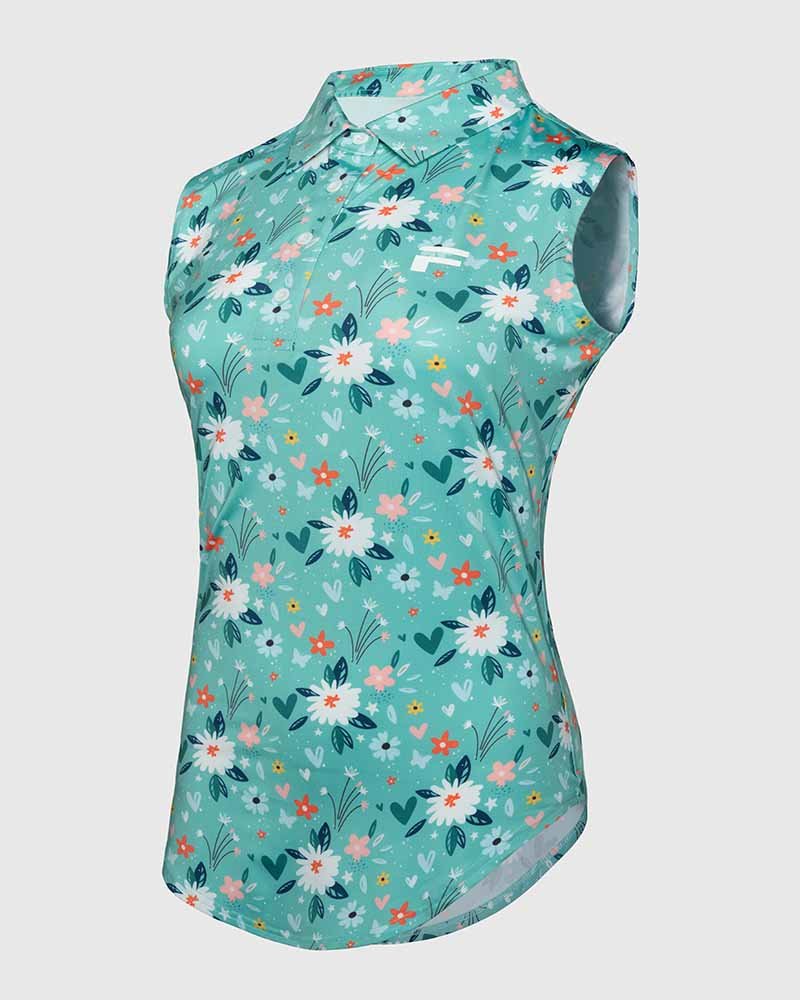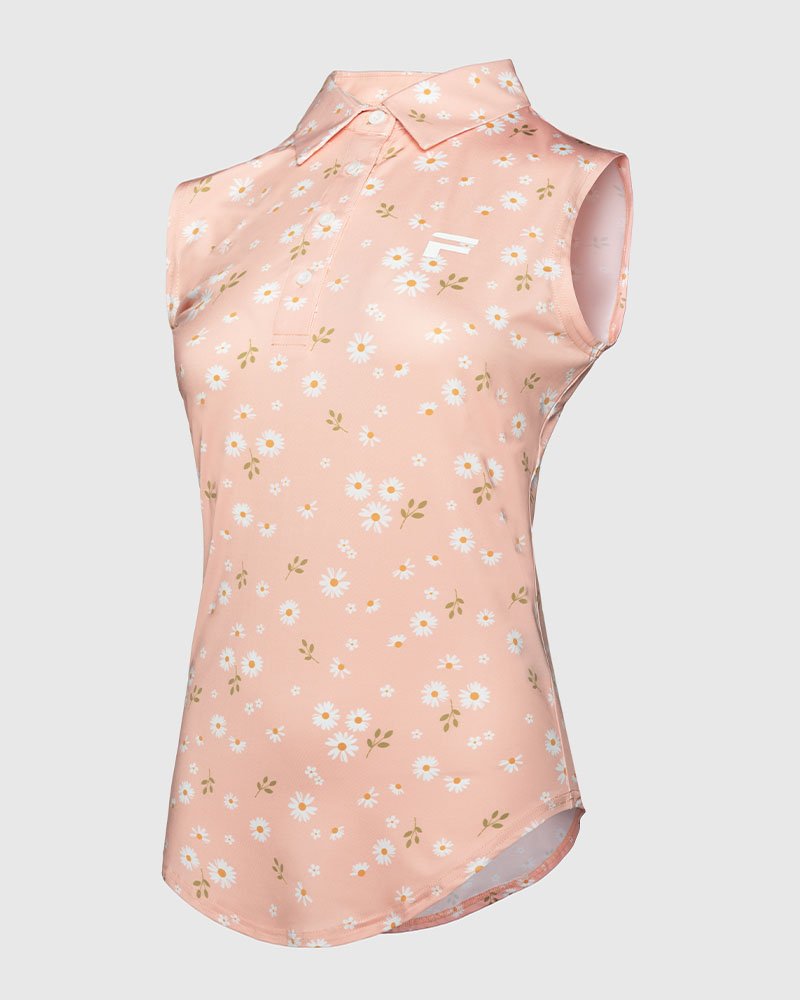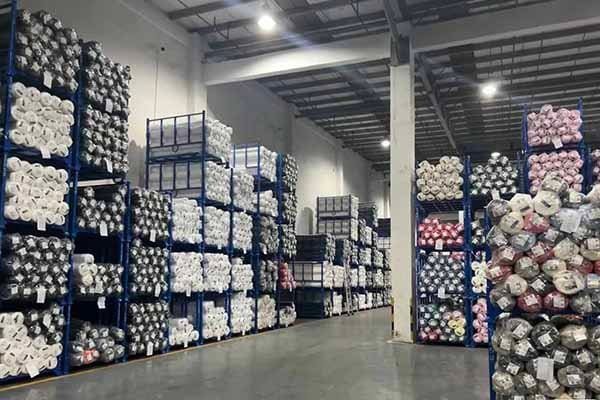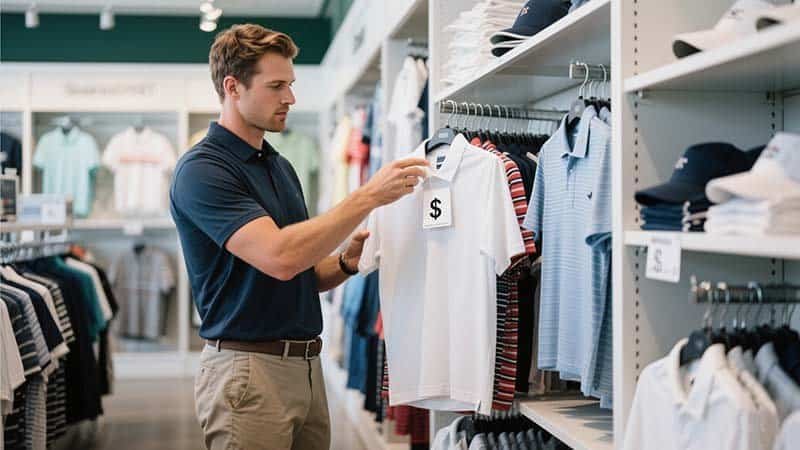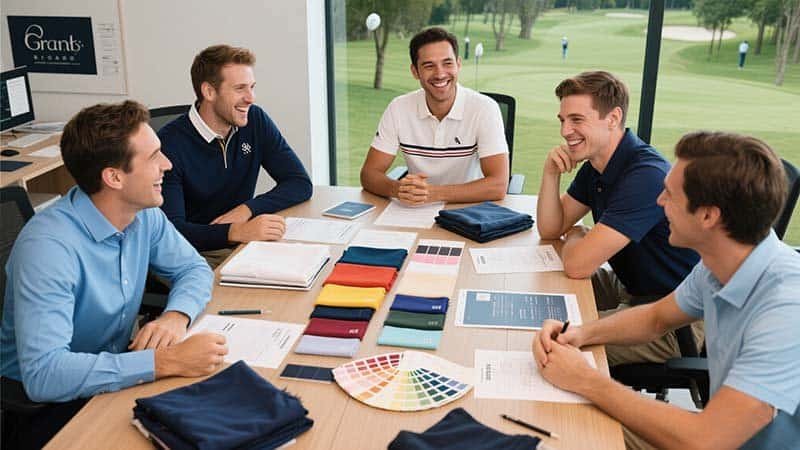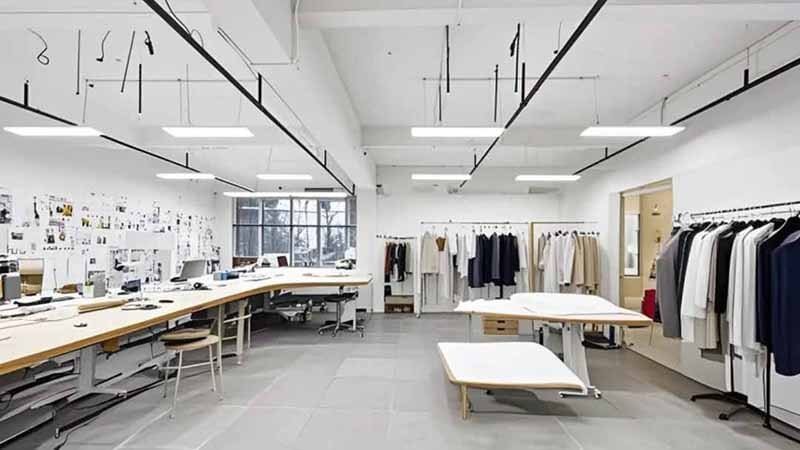
Creating custom golf apparel involves more than just printing logos on polos. It’s a detailed process that transforms your brand’s vision into functional, performance-ready gear—designed, tested, and delivered with precision.
Custom golf apparel manufacturing follows a step-by-step process: it starts with concept design and tech pack creation, followed by sourcing performance fabrics, sampling, bulk production, and final quality checks. The garments are then packaged and shipped globally. Each stage ensures your apparel is stylish, functional, and tailored for peak performance on the course.
Step1:Concept & Sketching – Turning Ideas into Wearable Performance
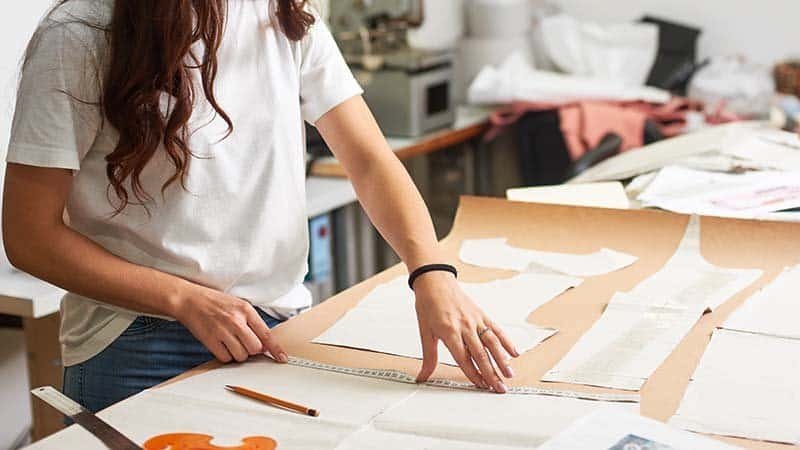
Every great product starts with an idea — a moment of inspiration. For me, it usually begins with a simple sketch, a note on my phone, or a mental picture of the kind of golf apparel I wish existed. That’s where the real journey begins.
How do you turn a golf apparel concept into a high-performance, wearable product?
It starts with understanding your brand’s voice and customer needs. From there, we explore fabric options that match both performance and style, keeping practicality at the core. A thoughtful blend of aesthetics and function helps your apparel not only look sharp but also perform on the green — from breathability to sun protection and stretch.
It’s a mix of art, science, and a bit of intuition.
Before anything gets stitched or sampled, we need to translate ideas into something the factory can understand — a design that speaks your brand language.
1. Design Consultation
When I started, I didn’t just want to make clothes — I wanted to make something that felt like me. So I began with a design consultation.
Why is design consultation the first step in custom golf apparel?
Because no two brands are the same. During this phase, we explore your brand’s tone, color palette, customer profile, and design inspirations. Is your vibe classic and clean? Bold and expressive? Youth-driven and playful? These choices shape everything — from fit to fabric to finishing touches.
Digging Deeper: Brand Analysis
Here’s what we usually consider:
| Element | Purpose |
|---|---|
| Brand Personality | Minimalist, Sporty, Retro, Luxury, etc. |
| Target Customer | Age, lifestyle, where they wear it |
| Color Preferences | Neutral tones vs. vibrant, seasonal color strategy |
| Logo Use | Bold front prints or subtle detailing |
A clear direction helps us move confidently into material selection and styling — without second-guessing every step.
2. Fabric Suggestion
I used to think fabric was just about feel. But in golf apparel? It’s everything.
What fabrics work best for different golf apparel needs?
That depends on your product goals. For hot weather play, I often recommend moisture-wicking bird’s eye mesh — it breathes, dries fast, and holds color well. High-end brands love lightweight nylon-spandex blends for a sleek, premium finish with stretch. Want that elevated look and performance? Nylon it is.
Quick Fabric Suggestions Table
| Use Case | Recommended Fabric | Why It Works |
|---|---|---|
| Summer Golf | Bird’s Eye Mesh (Poly) | Lightweight, breathable, quick-dry |
| Luxury Golfwear | Nylon + Spandex blend | Smooth touch, 4-way stretch, sleek look |
| All-Season Performance | Polyester + Lycra blend | Durable, easy care, good stretch |
Pro tip: Always test fabric with your preferred printing or embroidery method to make sure the branding stays crisp.
3. Functionality Guidance
Let’s be honest — looking good isn’t enough if your gear can’t handle a sweaty back nine or a sudden drizzle.
Which functions should golf apparel include for real-world use?
That’s where performance details shine. I usually guide clients toward features like UV protection, four-way stretch, anti-pilling, odor resistance, and even water-repellency. These features don’t just add value — they solve real problems golfers face. Plus, they’re a great selling point when it’s time to market your line.
Must-Have Functional Features
| Functionality | Why It Matters on the Course |
|---|---|
| UV Protection | Shields skin during sunny rounds |
| 4-Way Stretch | Moves with the body for smooth swings |
| Anti-Pilling | Keeps fabric fresh after multiple washes |
| Odor Control | Keeps you feeling confident post-game |
| Quick-Dry | Comfort during hot or humid rounds |
Imagine your customer reading your product description and thinking, “That’s exactly what I need.” That’s the magic of pairing purpose with performance.
Conclusion
From sketching your dream fit to choosing the perfect fabric, the early stages of golf apparel design are where the magic happens. This is where your brand starts to feel real — piece by piece.
🧠Industry experience added: Many clients overlook the importance of “athletic cut” in the first draft stage, such as the impact of shoulder width/sleeve length on swing freedom. We can avoid this by modeling the design in advance through 3D fitting.
Step2: Tech Pack Development – Your Design’s Technical Blueprint

Once your design direction feels solid, it’s time to turn that creative vision into something manufacturers can actually use. That’s where the tech pack comes in — your design’s official blueprint.
What is a tech pack in custom golf apparel manufacturing?
A tech pack is a detailed document that communicates everything about your garment to the manufacturer — from exact measurements to stitching style, fabric choices, color codes, and more. It reduces miscommunication, saves time during sampling, and ensures your final product turns out just how you imagined. Without a tech pack, you're basically asking the factory to guess.
Let’s break down what goes into a solid tech pack.
Think of your tech pack as a GPS for your manufacturer. Without it, you’re driving blind. With it, your idea has a clear path forward.
1. Size Specs
Getting the fit right is everything — especially in golf apparel, where movement and comfort are key.
What are size specs and why are they essential?
Size specs are the measurements that define the shape, length, and proportions of your garment in each size. From chest width to sleeve length, each point is measured precisely. These specs help ensure consistency across sizes and are crucial for sample approvals and bulk production.
| Measurement Point | Size M (inches) | Tolerance |
|---|---|---|
| Chest Width | 21.5 | ±0.5" |
| Body Length | 29 | ±0.5" |
| Sleeve Length | 9.25 | ±0.25" |
Tip: Always define tolerances — factories need to know how much “wiggle room” is acceptable.
2. Construction Details: Stitching, Hems, Collar
You may not notice these things at first glance, but they define how professional your garment feels.
Why are construction details important in a tech pack?
These notes specify how each part should be sewn — for example, should the hem be double-needle stitched? Should the collar have a hidden button? These details ensure quality, durability, and match your desired aesthetic.
Examples of Construction Details:
- Collar: Self-fabric collar with soft interlining
- Hem: 2-needle coverstitch finish
- Armhole: Flatlock stitch for comfort
Don’t assume the factory will guess — spell it out clearly.
3. Materials List (Main Fabric, Trims, Print, Label)
The materials you choose tell your product’s whole story — from comfort to branding.
What materials should be listed in a tech pack?
Include everything: the main fabric (e.g. 90% polyester / 10% spandex, 160gsm), trims (zippers, thread, buttons), decoration methods (DTG print, embroidery), and even labels or packaging items. Listing them ensures accurate sourcing and pricing.
Example Materials Table
| Item | Description |
|---|---|
| Main Fabric | Bird’s eye mesh, 160gsm, poly-spandex |
| Neck Label | Woven, 2.5x5cm, AIRS branding |
| Care Label | Printed, multilingual, inside left seam |
| Print Method | Screen print, single color logo |
Being thorough up front avoids surprises later.
4. Color Standards (Pantone)
Color might look perfect on your laptop — but printing it accurately is a different story.
How are color standards used in apparel production?
Pantone codes offer a universal color reference. Instead of saying “sky blue,” you’ll say “Pantone 290 C.” This ensures the dye house or printer reproduces the exact tone you want — whether it's your main body color, trim, or logo.
Pro Tip:
Always check physical Pantone swatches under daylight — screens lie.
5. Flat Sketch or CAD Reference
A picture is worth a thousand emails.
Why include sketches or CAD drawings in a tech pack?
Flat sketches (2D line drawings) or CAD renderings provide visual clarity on your design — front, back, side views, and key details like stitching lines or placements. These help the pattern maker and sewing team interpret your vision correctly.
What to Show:
- Front and back view
- Logo placement
- Pocket details
- Stitching lines and hem finish
The more visual your tech pack, the fewer misunderstandings down the line.
Conclusion
Your tech pack doesn’t have to be fancy — but it does have to be clear. This document turns your creative vision into a factory-ready plan. It’s the bridge between dreaming it and doing it.
⚙️Industry Suggestion: Adding style reference to the Tech Pack stage can greatly improve sample reproduction and shorten the number of proofs.
Step3: Fabric & Trims Sourcing – Performance Meets Style

Choosing the right materials is where your golf apparel really starts to take shape. This step isn’t just about picking what looks good — it’s about what performs, lasts, and tells your brand’s story through texture, function, and finishing touches.
What goes into sourcing fabrics and trims for custom golf apparel?
You need to balance performance with aesthetics. This means choosing technical fabrics that breathe, stretch, and protect — while also thinking about visual impact. Then there are trims: zippers, logos, labels — the small details that make a big impression. The right combination ensures your gear not only looks premium, but feels built for the course.
Let’s get into the materials that matter most.
This is where science meets design — because no one wants gear that looks great but clings, sags, or fades after a few rounds.
1. High-Performance Golf Fabrics: UV Protection & Moisture-Wicking
When I’m designing for active golfers, function is non-negotiable. Comfort under pressure is everything.
Which fabrics are best for golf in heat and sun?
Look for lightweight, moisture-wicking, and UV-protective fabrics. Common choices include bird’s eye mesh and poly-spandex blends. These keep you dry, cool, and shielded from harmful rays — essential for long days outdoors.
Popular Functional Fabrics:
| Fabric Type | Benefits |
|---|---|
| Bird’s Eye Mesh | Breathable, quick-dry, great for polos |
| Poly-Spandex Knit | Stretchy, smooth, good for activewear |
| Nylon Microfiber | Lightweight, UPF-rated, high-end feel |
These materials support movement, resist odor, and maintain color even after multiple washes.
2. Style-Driven Panels: Air Layer and Mesh Inserts
Design is your silent salesman — and smart use of panels can elevate any piece.
How do fashion panels and textured fabrics enhance golf apparel?
High-stretch “air layer” fabrics or mesh panels offer a modern look and improve breathability in target areas like underarms or sides. They're great for contrasting colors or tonal layering, making even simple designs stand out.
Example Applications:
- Air Layer Fabric: Great for sleeves or back yoke for structure
- Mesh Inserts: Used in underarm areas for ventilation and sporty look
- Ribbed Panels: Add texture and visual break to otherwise flat designs
Used creatively, these elements turn basic into bold — without sacrificing function.
3. Premium Trims: YKK Zippers, TPU Transfers & Custom Silicone Logos
It’s the little things that scream quality. You’d be surprised how much customers notice.
What trims should be considered for a premium golf apparel feel?
Start with YKK zippers — smooth, durable, trusted worldwide. Then add branding: TPU heat transfers, 3D silicone logos, and reflective prints elevate your brand’s identity while staying sharp wash after wash.
Must-Have Trims & Details:
| Trim Type | Why It Matters |
|---|---|
| YKK Zippers | Industry standard for reliability |
| TPU Heat Transfer | Sleek, modern branding that won’t peel |
| Silicone Logo | Adds depth, texture, and high-end appeal |
| Reflective Tape | Bonus function for visibility & safety |
Investing in quality trims doesn’t just improve performance — it enhances the unboxing moment, too.
Conclusion
Sourcing fabrics and trims is where your product becomes real. It’s the balance of tech and taste, style and function — and it's what separates ordinary from unforgettable.
📈 Industry Trend Alert: Eco-friendly fabrics (such as rPET recycled polyester) are very popular in the European and American markets and are the new favorites of high-end golf brands.
Step4: Sampling & Prototyping – The First Look & Fit

This is the moment your design starts to feel real. Sampling is where your ideas step off the page and onto an actual garment. It’s exciting — and humbling — because this is also when you find out what needs tweaking.
What happens during the sampling and prototyping phase in custom apparel?
Your tech pack gets handed to a pattern maker, who brings your design to life. A prototype sample is sewn and tested for fit, comfort, and construction. You’ll review it via video or in person, request changes, and iterate. This phase is all about refinement — getting every detail dialed in before mass production.
Let’s walk through how it works.
From flat sketches to a 3D garment — this is where the transformation begins.
1. Pattern Maker Creates Sample Based on Tech Pack
Once the tech pack is finalized, the factory’s pattern maker gets to work.
How is the first sample created from a tech pack?
The pattern maker reads your tech pack like a blueprint. Based on your size specs, construction notes, and fabric info, they cut patterns and assemble the first physical sample. This initial piece might not be perfect — and that’s okay. It’s the foundation for fine-tuning.
What’s Included in the First Sample:
- Your selected fabric & trims (or closest available)
- Actual size and construction methods
- Mock-up logo placements if branding is included
This step sets the tone for everything that follows — clarity here saves major headaches later.
2. Fit Test & Revisions
I’ll be honest — the first time I saw my sample, I was proud and frustrated. Some parts looked spot on, others felt… off. That’s normal.
What is a fit test and why is it important?
Fit testing is when you (or a model) try on the sample to check comfort, proportion, and movement. From sleeve length to shoulder width, you evaluate how it actually feels on a body. Then you provide feedback — too tight here, too loose there, collar too high — and those notes go into the next revision.
Common Adjustments After Fit Test:
- Sleeve or body length
- Neckline shape or collar height
- Armhole comfort and movement
- Logo sizing or repositioning
Usually, 1–2 rounds of revisions get you close to the final look.
3. Sample Approval: Video Review or Physical Delivery
You don’t have to be on-site to review your sample — modern sampling is flexible.
How do clients approve samples remotely?
You can choose to receive a detailed sample review video from the factory, showing fit, stitching, logo placement, and color in natural light. Or, you can have the physical sample shipped to your location for hands-on review. Some clients even do both — video for speed, sample for detail.
Video Sample Review Includes:
- Full 360° fit view on model
- Close-up of stitching and trims
- Logo placement walkthrough
- Commentary on fabric behavior
Whether you’re across the globe or just down the road, this step ensures you're 100% confident before production starts.
Conclusion
Sampling isn’t just about making a sample — it’s about getting it right. This is where ideas turn into garments, and garments get polished into real products. It’s hands-on, sometimes frustrating, but always worth it.
🧵 Experience Alert: Golf apparel must be structurally stable during movement - our fit is dynamically tracked during swing tests to ensure it “looks good” and “moves well”. "It's a lesson learned.
Step5: Bulk Production – Quality + Speed

Once your sample is approved, it’s time to scale up — and this is where things get real. Bulk production is a blend of precision, planning, and quality control. The goal? Deliver large quantities without losing the craftsmanship that made your sample special.
What happens during bulk production of custom golf apparel?
Production starts with fabric inspections to ensure consistency. Then, fabrics are precision-cut and sewn with strict quality checks at each step — especially around stress points like collars and cuffs. Once garments are assembled, they go through full inspections or random AQL (Acceptable Quality Limit) checks before being packed and shipped.
Let’s break down each key stage.
Production is about doing it right — over and over again, hundreds or thousands of times.
1. Incoming Fabric Inspection: Shrinkage, Color, Weight
Before a single piece is cut, we check the raw materials — thoroughly.
Why is fabric inspection essential before production begins?
Even the best-looking fabric can cause major issues if it hasn’t been tested for shrinkage, color variation, or GSM (weight). We test a portion of each roll to ensure consistency and performance.
Key Fabric Tests:
- Shrinkage Rate after washing
- Color Fastness under sunlight & sweat
- GSM (Grams per Square Meter) to confirm weight accuracy
- Color Matching against approved Pantone standard
Catching problems now prevents costly issues later in bulk.
2. Precision Cutting: Auto-Cut Machines + Double Check
Accuracy here sets the tone for everything that follows.
How is fabric cut during bulk production?
Once fabric passes inspection, it’s spread and cut using automated cutting machines — faster and more precise than manual methods. After cutting, each panel is checked again for alignment and quantity.
Cutting Process Includes:
- Digital marker planning to reduce fabric waste
- Automated blade cutting for accuracy
- Panel count verification
- Spot-checks for misalignment or defects
The result: cleaner seams, less waste, and faster assembly lines.
3. Stitching & Sewing: Reinforced for Durability
It’s the little things — like loose threads or weak seams — that can damage your brand’s reputation.
What stitching quality controls are used in bulk production?
During sewing, each workstation follows standardized procedures. Critical zones like necklines and cuffs get extra reinforcement to prevent unraveling. Supervisors monitor stitch tension, alignment, and finish.
Focus Areas:
- Collars & Sleeve Openings: Reinforced with bar-tack or double stitching
- Logo Application Areas: Double-checked for placement and security
- Seam Alignment: Visual checks along every garment section
Each piece passes through multiple hands — each with a checklist.
4. Full Inspection & AQL Sampling
No one wants surprises after production.
How is quality checked before shipment?
Garments go through either a full inspection (100% check) or AQL sampling — a globally recognized method that tests a portion of the batch to estimate overall quality. Defects are logged, sorted by severity, and resolved before packing.
Inspection Types:
| Inspection Method | Description |
|---|---|
| Full Inspection | Every garment checked for defects |
| AQL Sampling | Random check (typically 2.5% AQL standard) |
Checks include stitching flaws, size tolerance, print defects, and trim application.
Conclusion
Bulk production isn’t just about quantity — it’s about repeatable quality. With solid systems, sharp machines, and attentive hands, you get apparel that delivers on every promise, at scale.
📦 Manufacturing Experience Sharing: we advise customers not to just go for low price - the quality of golf apparel can be seen at a glance (especially the stitching, collar stiffness, and auxiliary material treatment). Choose a factory with experience in OEM for sports brands for more security.
Step6: Packaging & Global Shipping – Ready for Retail or Event
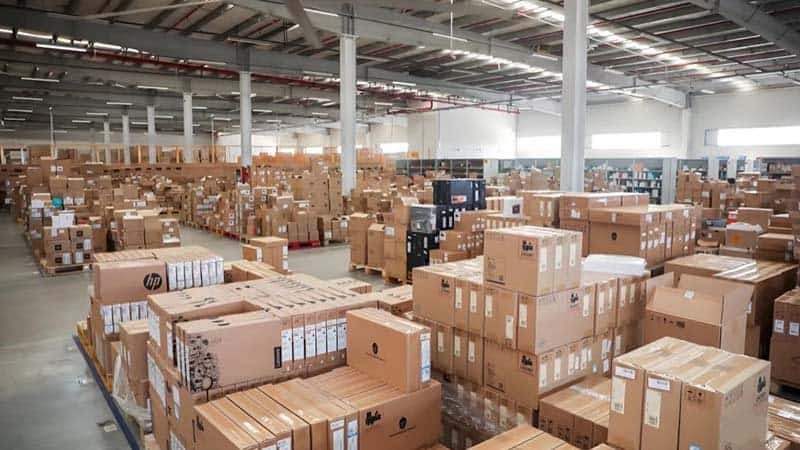
After all the design, sampling, and production — now it’s time to get your gear out into the world. Packaging and shipping may seem like the final step, but done right, it’s a powerful extension of your brand.
What happens during packaging and global shipping for custom golf apparel?
Garments are sorted by SKU, packed according to your specifications, and prepped for either retail, warehouse delivery, or event distribution. Custom packaging — from hang tags to printed cartons — reinforces your branding. Finally, we offer flexible global shipping options like FOB or DDP via FedEx, DHL, or sea freight.
Let’s take a closer look at how to wrap it all up.
It’s not just shipping clothes — it’s delivering your brand experience.
1. Sorting and Boxing by SKU
Before anything goes into a box, we make sure every piece is in its right place.
How are finished garments sorted and packed?
Each item is sorted based on SKU — which typically includes size, color, and style code. This makes warehousing, inventory, and order fulfillment faster and more accurate for your team or distributor.
Common Sorting Details:
- Product Name + Style Code
- Size Run (e.g. S-3XL)
- Color Variants
- Quantity per Carton
Everything is counted, checked, and documented before sealing.
2. Custom Hang Tags, Polybags & Branded Cartons
This is your first physical touchpoint with customers — make it count.
What packaging options are available for custom golf apparel?
You can include custom-printed hang tags, branded polybags, and shipping cartons with your logo or messaging. This adds a premium feel and makes your product retail-ready right out of the box.
Popular Custom Packaging Options:
| Item | Customization Features |
|---|---|
| Hang Tag | Brand logo, size, QR code, storytelling |
| Polybag | Printed or resealable, eco-friendly options |
| Outer Carton | Branded print, reinforced corners |
| Insert Cards | Care instructions, brand message |
Want to elevate the unboxing experience? This is your moment.
3. Shipping Methods: FOB or DDP, Global Coverage
Wherever your customers are, we’ll get it there.
What are the shipping options for delivering bulk apparel orders?
You can choose between FOB (Freight On Board) or DDP (Delivered Duty Paid), depending on your preference. We work with trusted global carriers like FedEx, DHL, and ocean freight providers to ship worldwide — whether to your warehouse, fulfillment center, or event venue.
Shipping Options Explained:
| Method | Includes Duties/Taxes? | Delivery Speed |
|---|---|---|
| FOB | No | Flexible, faster by air |
| DDP | Yes | Hassle-free, all-in-one |
| Sea Freight | No (unless DDP) | Cost-effective, slower |
You’ll get tracking, clear documents, and delivery updates — because peace of mind matters, too.
Conclusion
The final stretch is about more than boxes and barcodes. It’s about delivering your vision — professionally, efficiently, and with a touch of brand magic. Ready to ship? Let’s go.
🌍 Eexperience Advisory: If used for tournaments/events, it is recommended to place your order at least 60 days in advance; we can coordinate customs clearance on your behalf.
Final Thoughts – From Vision to Victory
A successful customized golf apparel project is more than just a beautiful design, it's all connected from pattern making, craftsmanship, athletic tailoring, to end-of-line packaging. An experienced supply chain + professional communication team can truly turn your idea into a high-quality, on-time delivery.




